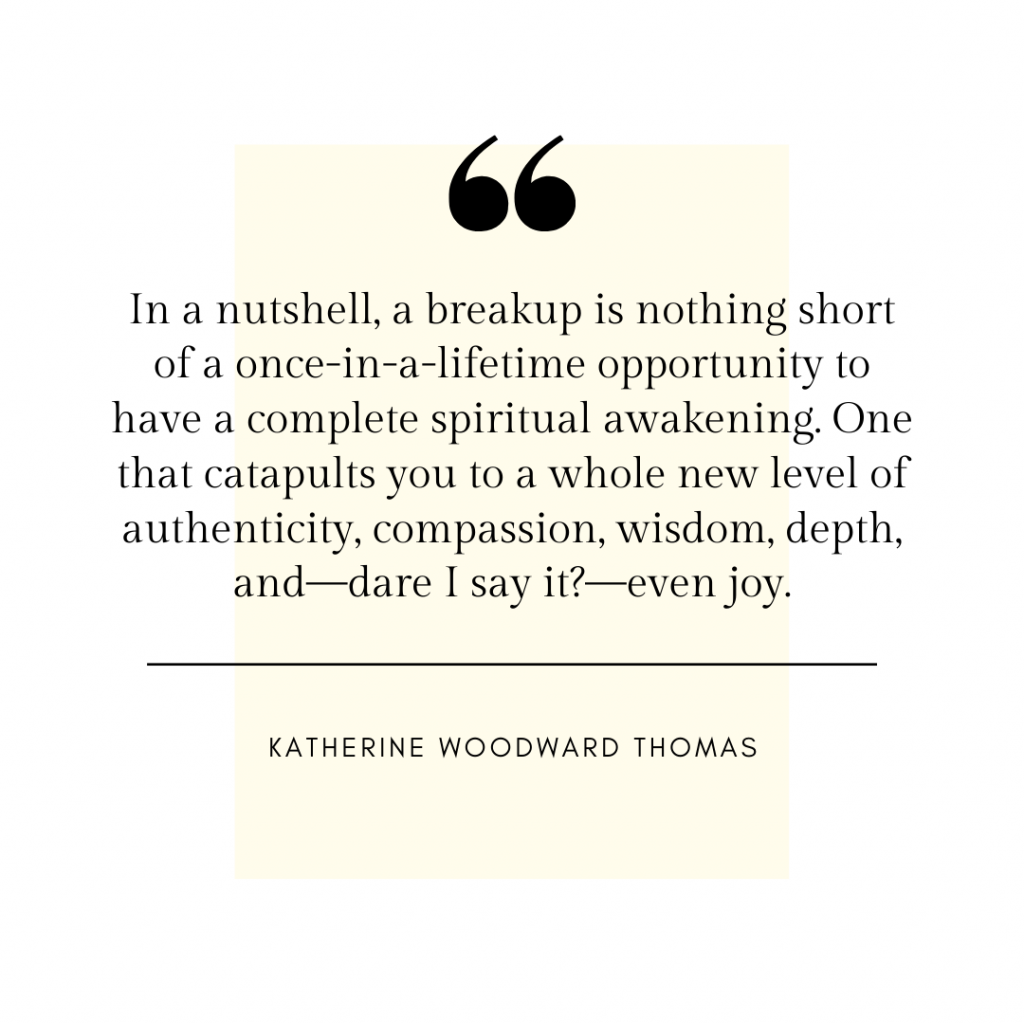Conscious Uncoupling Explained in Five Steps

Breakups hurt – on the Holms-Rahe Stress Inventory, the breakup of a lasting relationship ranks as the second most stressful life event. Breakup or divorce typically generates tremendous emotional aftermath, especially when you have children together.
Relationships and people in them change over time. You may have had unrealistic expectations in the beginning of your relationship and felt disappointed when these were not fulfilled. Many couples lose their connection over time and feel like they and their partners have grown apart.
However, many people say that breakups caught them by surprise, causing them to feel like it was the end of the world. After a breakup, you might feel as if it will be impossible to love or be happy ever again. As a Certified Conscious Uncoupling Coach, I will walk you through the basic steps and explain how these can help you recover from a traumatic breakup.
What is Conscious Uncoupling?

While breakups undeniably can be extremely painful, there are things you can do to consciously uncouple and move on.
Created by a licensed marriage and family therapist, Katherine Woodward Thomas, conscious uncoupling describes a breakup or divorce where both partners accept responsibility for the separation and look to function healthy in the future.
Conscious Uncoupling: Why Does It Matter?
The loss of a significant relationship can cause grief, anxiety, depression, low self-esteem, and trust issues. You may feel as though you’ll never be able to trust others again and move forward.
Some people believe that even a bad connection is better than no connection. They refuse to give up on a relationship, replacing a positive bond they once shared with their partner with a negative one.
So, instead of moving on, people sometimes stay attached at all costs, engaging in toxic patterns, saying and doing things they could later regret (they begin gossiping or stalking their partner, become hostile or abusive, etc.).
There are no boundaries in a toxic relationship. Resentment, conflicts, and unhappiness become ordinary, so you and your partner cannot communicate without tension. Nothing ever gets resolved, and it simply doesn’t feel right. In the end, a toxic relationship weakens your self-esteem, making you feel exhausted and worthless.
However, it doesn’t have to be this way. There are conscious uncoupling steps that can help you end a romantic relationship with respect, kindness, and integrity, where both of you can move on without feeling wrecked by the experience.
Suppose you feel overwhelmed with the breakup and don’t know how to consciously separate. In that case, couples counseling can be a safe environment to restore emotional balance, let go of toxic patterns, and learn how to part ways healthily.

Conscious Uncoupling Steps
Here are five conscious uncoupling steps to help you navigate your relationship’s end in a healthy and mutually satisfying way.
Step One: Find Emotional Freedom
In the aftermath of a breakup, you may feel as though your heart is broken. You may feel unsafe in the world, distrustful to everyone you meet. You may act in impulsive ways, doing harm to yourself and others.
Finding emotional freedom means not letting your emotions have you. In this step, it is essential that you identify your feelings, name, and address them. To mindfully observe your feelings and welcome them.
Once you address the feelings of despair, hurt, rage, hatred, or fear, you will be able to deescalate them and transform them into constructive forces of positive changes in your life.
Step Two: Reclaim Your Power and Your Life
We usually tend to ruminate upon the reasons for our breakup, going over it again and again until we start feeling completely worn-out.
Feelings of rejection and self-doubt may cause you to question yourself and ponder what you do to generate the breakup. Such self-judgmental thoughts may, in turn, negatively affect your mental health, other relationships, and overall well-being.
The purpose of step two is to help you understand how you used to blame and shame to victimize your breakup and how this victimizing has been holding you back from healing. Step two should help you reflect on (often subtle) toxic patterns you used in your relationship. It should help make amends to yourself and reclaim your power in your life.
Step Three: Break the Pattern, Heal Your Heart
This step is about identifying the patterns you were playing out in your relationship that were rooted in your childhood fears or traumas. Once you understand the origins of your unproductive thinking and behavior patterns, you’ll feel empowered to break those patterns and start loving your life again.
Breaking up from the toxic patterns in your thinking or behavior can help you understand your relationship’s problems more clearly.
Liberation from painful patterns that prevented you from inner potentials in love can awaken the feelings of self-love and self-appreciation, helping you feel lovable and valuable again.
Step Four: Become a Love Alchemist
While the first three steps have all been about making amends to yourself, step four is about getting right with your ex.
In this step, you should learn how to set healthy boundaries and let go of your partner’s vows in your relationship. Through step four, you will learn to focus on your new healthy life and move forward.
Step Five: Create Your Happy-Ever-After Life
This final step should empower you to make healthy and sensible decisions and reinvent your life in a way that will allow you to grow after the end of your relationship. To heal from the breakup, you need to forgive yourself and your partner for everything that was said or done.
Acknowledge your responsibility for the breakup without self-judgment, as only this way can you switch from blaming to understanding. Taking responsibility for your behavior in the relationship can help you openly discuss your feelings, experience more empathy for your partner’s feelings, and reconcile.
The best way to overcome negative feelings is through acceptance, self-compassion, and compassion.
Not seeing yourself as a victim can help you return to yourself with self-love and create your happy-ever-after life.
Conscious Uncoupling Summary
Ever since the famous actress used the phrase ‘conscious uncoupling’ to describe a harmonious separation from her ex-husband, the term has become widely accepted in relationship therapists’ vocabulary.
The expression conscious uncoupling has been used since to define a separation where both partners recognize their share of responsibility in toxic patterns and relationship dynamics and decide to part their ways on good terms.
Conscious uncoupling steps can guide you through a painful process of separation, helping you break the unhealthy patterns and move on without holding a grudge towards your ex and your past. The five steps of conscious uncoupling can help you feel empowered to bring back happiness and love in your life.
The most important relationship is the one you have with yourself. So as you are healing from a breakup and work through uncoupling, a major part of it is ensuring you are tending to yourself as well so that you can move into a generative place and step into all that is possible for you. When you are ready to do so, and would like support, book a time to speak with at www.chatwithkamini.com



